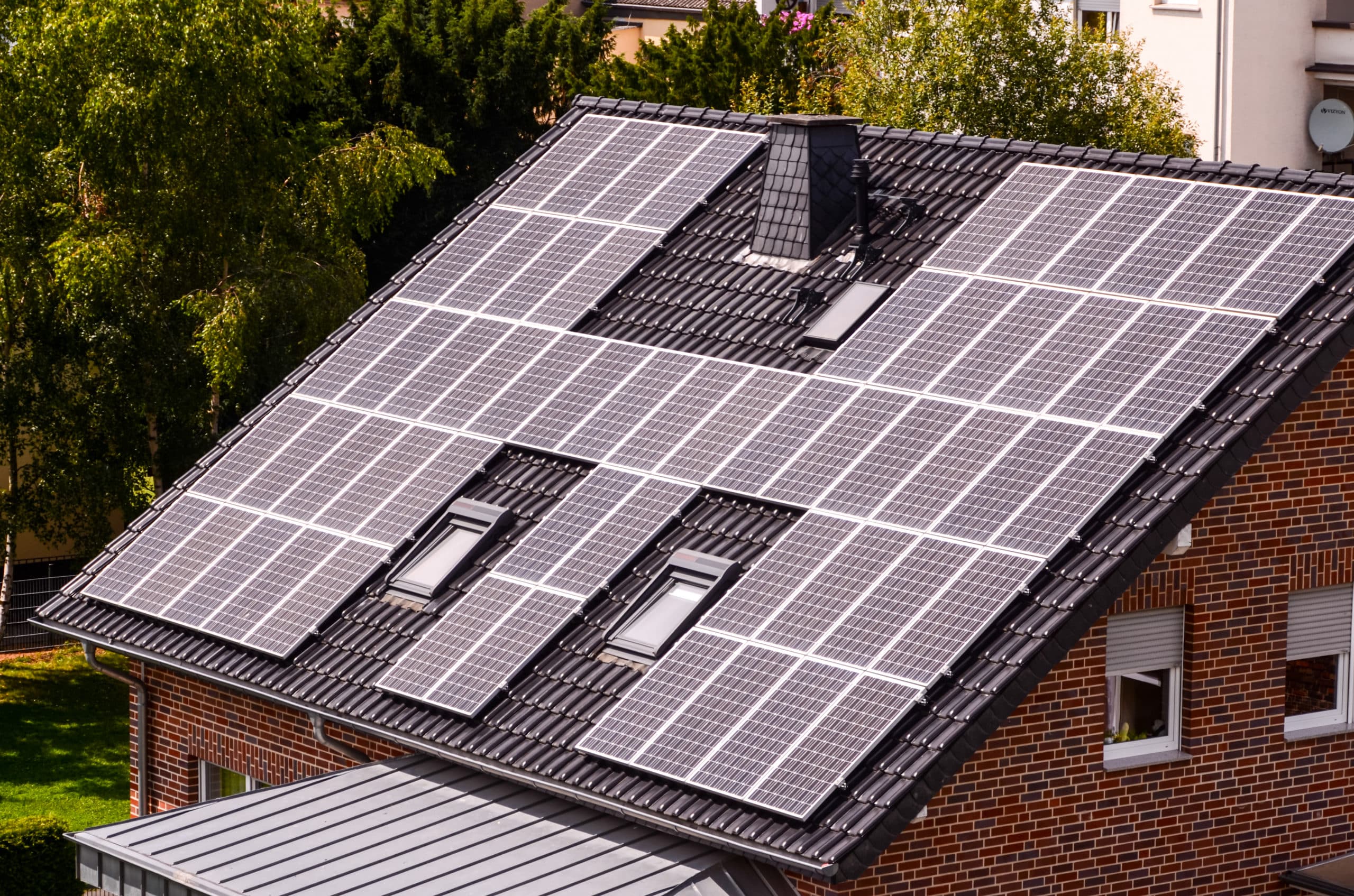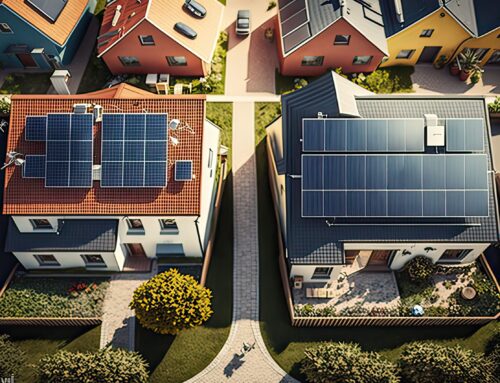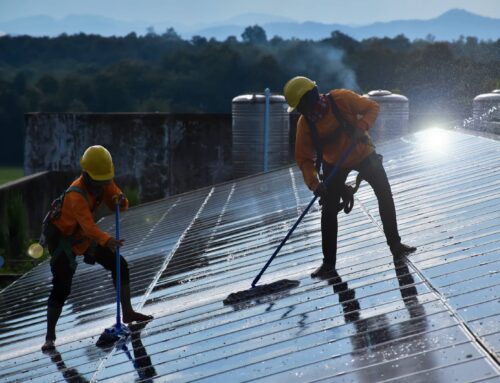While the snowfall can be beautiful, your solar panels may not think so. When snow falls onto solar panels, they can weigh down the solar cells and cover them up. This can cause them to develop “snow blindness” and can cause a dramatic drop in both voltage and current. This will make normal operation impossible.
Snow with high moisture content can form an insulating layer between solar cells so that sunlight cannot reach them to generate electricity. While this doesn’t harm the individual cells, it greatly reduces their ability to produce solar energy. Solar panels work efficiently when there is sufficient direct sunlight.
Cover With Protective Material
If you have solar panels installed onto your roof, then you should consider adding some kind of protective material like a cover to stop snow from accumulating and weighing solar cells down. Solar panels work better when cleared and can generate energy from the sun’s light during daylight hours.
If you’re not able to cover your solar system with a tarp, try adding some weight on top of solar panels to keep them from being covered up.
Remove Snow Build-Up
When solar cells are covered up by snow and ice, they cannot operate properly because the sun’s rays can neither reach them nor be reflected off their surfaces. The same goes for solar panels that have been stacked on top of one another because once any layer is covered by a thick layer (or layers) of snow or ice, it blocks light from reaching other solar panels below it.
Solar panels should never be buried under piles of heavy snow or sheets of solid ice. Not only will this greatly reduce their ability to generate solar energy, but it also makes them vulnerable to damage.
Get as Much Direct Light as Possible
It is best for solar panels to be installed in a way that they get as much direct sunlight as possible. On a day with no wind or clouds, solar cells will produce power from early morning until late afternoon hours when the sun goes down, and there’s less light available.
If you live in an area where you receive heavy snowfall during the winter months or don’t have as much sunshine daily when the cold weather sets in, solar panels should be installed in the correct place to work in the winter months. This will give solar cells the maximum amount of time possible to generate solar power and limit any disruptions caused by heavy snowfall or ice build-up on surfaces.





